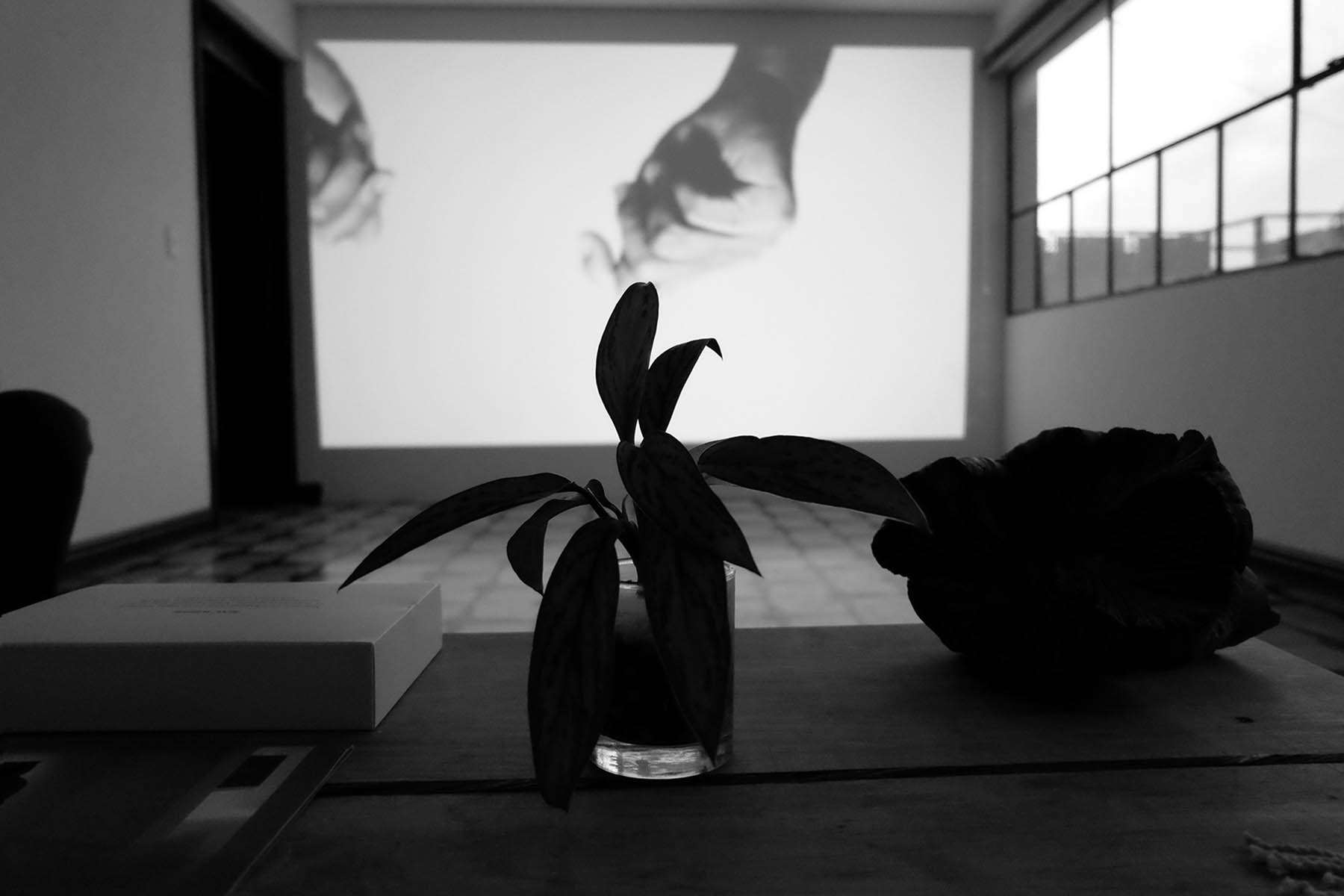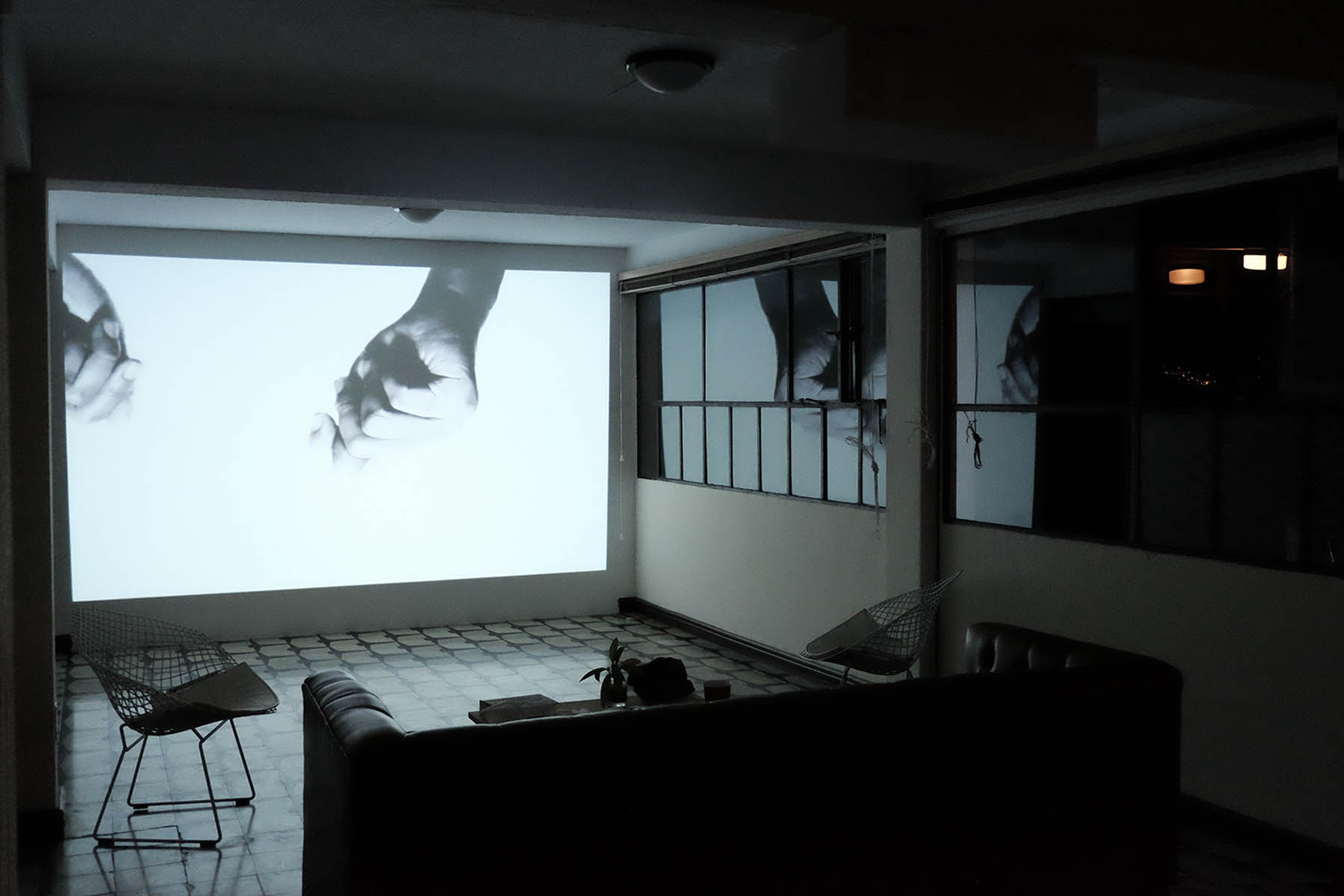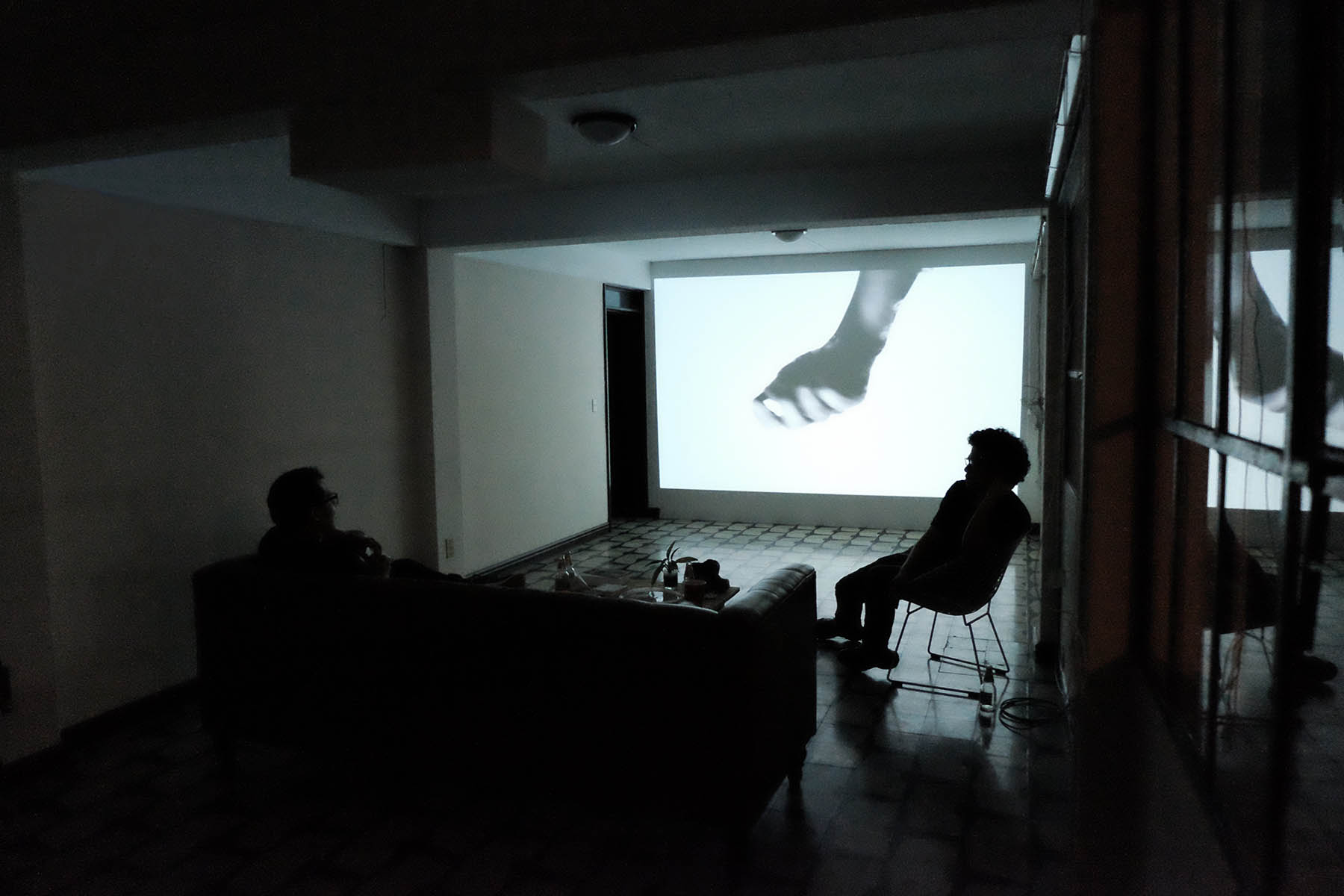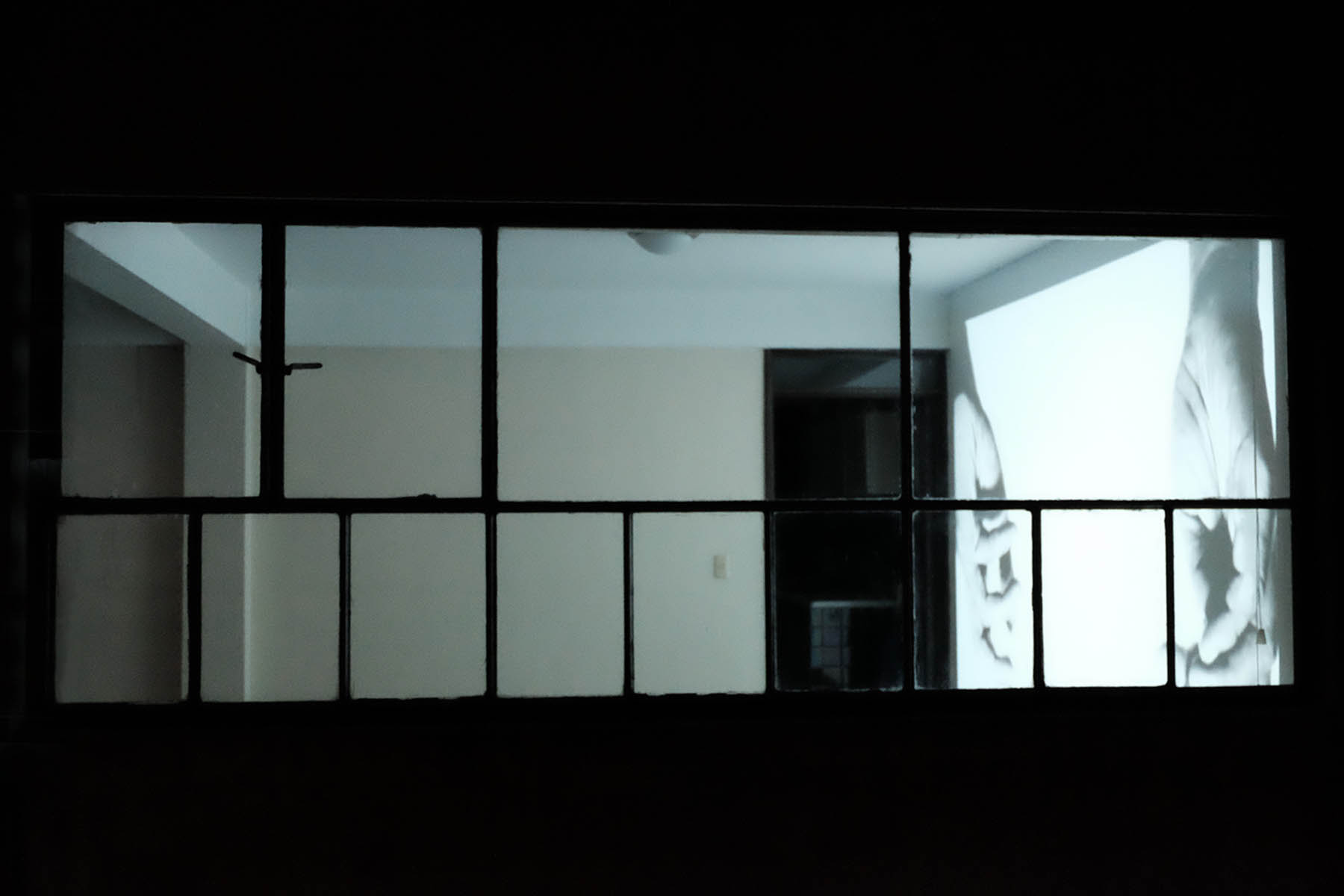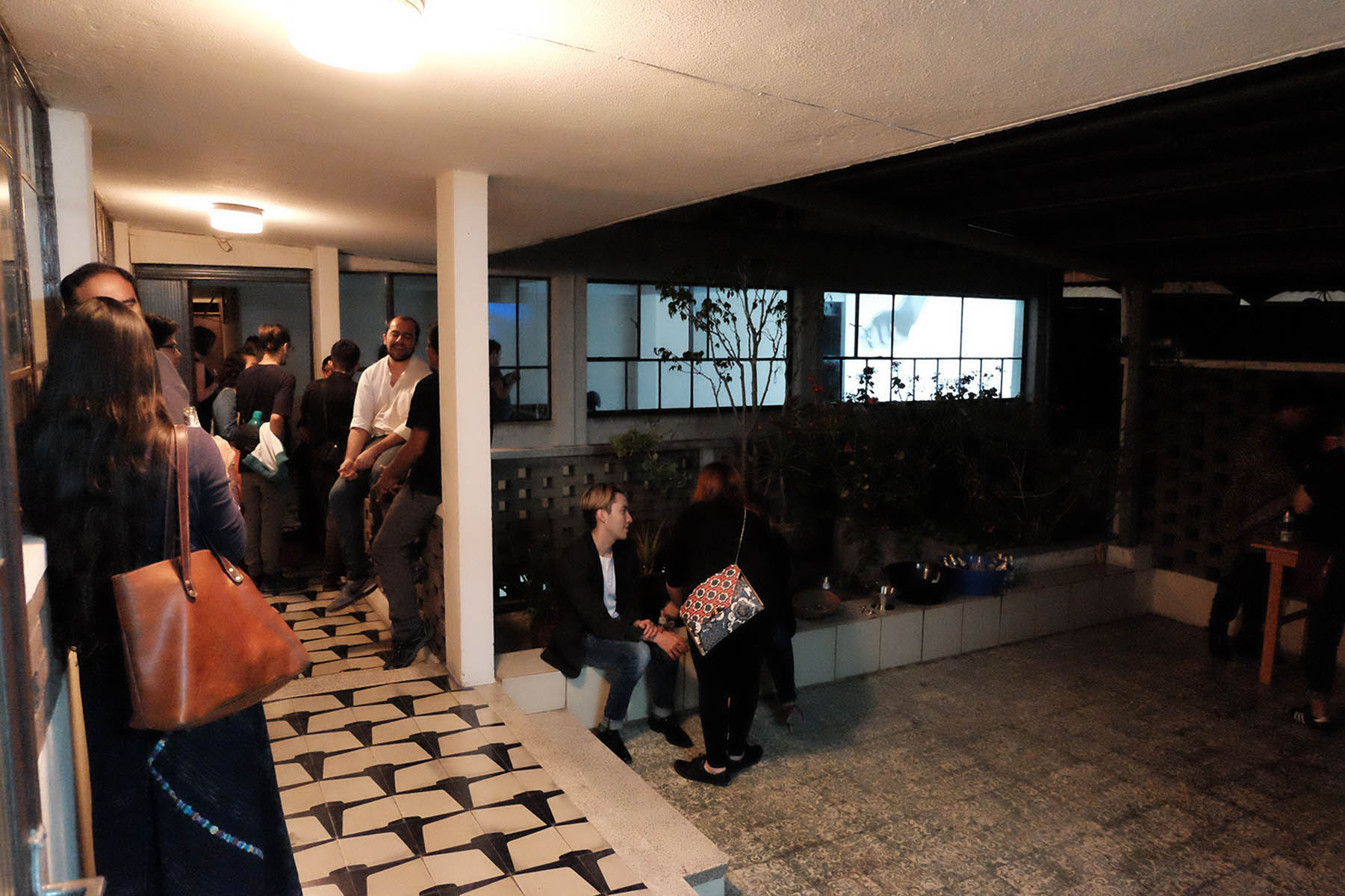GUSTAVO ARTIGAS
info@gustavoartigas.com
Tropo (N)
Video. 3 minutes 17 seconds. 2016.
Veneno // Manifestations of Toxic Effects
by Laura A. L. Wellen
Two hands appear against a white background. They pause there, fingers curled in against palm. The index finger of the left hand wraps around the thumb and pulses there for a moment. The hands open. They rest on an invisible surface, and we realize there is a pane of glass between us. The left hand opens a bit more, fingers unfurling as if remembering something. Then the left index finger and thumb meet. They make a gesture that suggests writing. They move more quickly, more fluidly; they make bold and quickening gestures across the clear pane, which we see is marked by fingerprints. Smudges of the oil from skin marks the glass. The right hand rests. Now they both pause, and we can imagine (if hands can think) that they are thinking about those gestures, reconsidering them. One disappears, and the other swipes across the surface, back and forth, wiping or smearing. Pause. Think. Smear. Remember. Write. Gesture. Curl. Uncurl. Jot. Pause. The hands open, wave. They come together, and pull up their sleeves. More smudgy fingerprints. Now dots, taps. One finger points and scratches. Then, with the back of the hands resting on the glass, the fingers curl in against the palms. Only for an instant. The base of a palm rests on the glass and the fingers open wide, then quickly wrap in together, almost a gesture of self-protection. They disappear.
In its formal conceit, the video could be a cousin of Hans Namuth’s video of Jackson Pollock painting (1950). Both show the gestures of an artist, seen through a glass pane that invites the viewer into an intimate space with the artist’s process. And yet, for Namuth, film was a way to celebrate the virtuosity of one of the 20th century’s great painters. Here, he shows us, is a man at the height of his creative power, making massive, expressionist canvases. In Tropo 2 (N), Artigas chooses to show us some- thing quite different. In contrast to Namuth’s film, the balletic hand gestures we see in Tropo 2 (N) are a reenactment of the artist’s final painting. The process is not heroic, but intimate; it is not about triumph, but about loss.
The question of Tropo 2 (N) is how to sanarse – how to heal oneself – from the toxins that seep into us, soaked up from our work, our city, our interactions, our past. How do we re-balance the “humors” in the body, level the emotions that rock us? Do you also feel hopeless in the face of recent events? Do you despair at the geopolitical disasters and environmental ruins we create around us? Do you look to history with sadness for the future? There are many kinds of poisons. A Toxicology Information Brief published by Cornell University describes how the body regulates its consumption and expulsion of toxins. When the body’s regulatory systems cannot be adjusted to normal levels, the physical effects of disease and discomfort make themselves evident. “The human body is a vastly complex biochemical organism, finely tuned and adaptable,” says the report, which is titled “Manifestations of Toxic Effects.” And yet, the report ends on an optimistic note: “Most toxic effects are reversible and do not cause permanent damage, but complete recovery may take a long time.”
There are many ways to heal, say the snake oil salesmen, the religions of the world, the yogis and the shamans, the self-help books, and the manifestoes for self-care. And they are right. There are many ways to heal. And, also, to heal can mean many different things. Naomi Rincón Gallardo (USA/Mexico, b. 1979) was a painter. The toxic effects of the paint she worked with manifest themselves in a poisoning of her body. Tropo 2 (N) pays homage to the gestures–indeed, the delicate choreography of movements–that N remembers from her past life. But the gesture of the video itself is not one of melancholy. Instead, Artigas points to how the toxins manifest themselves in N’s transformation. After leaving behind her painting career, she turned to theater-based work with underground commu- nities in Mexico City. And, so, when we see the choreography of her hand gestures, we are watching the memory of something that was so complicated, fraught with emotion and toxicity, a blend of passion and destruction. We feel how the hands remember. And we know that they not only survived, but they reinvented what they could do.
Yvonne is a proyect by Laura A. L. Wellen and Karl Williamson.
VIDEO TROPO (N)
